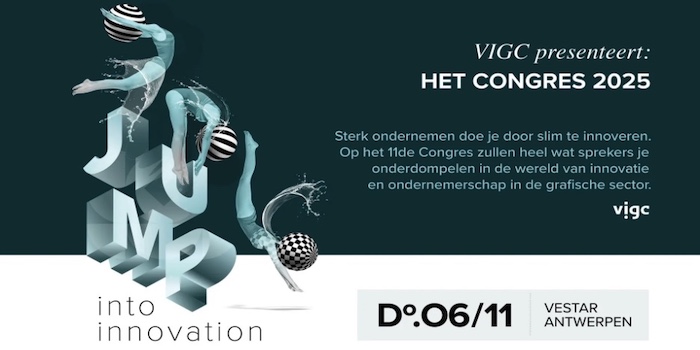Programmatic direct mail as an effective follow-up of online
Programmatic is one of the buzzwords of the last couple of years yet few people can explain in detail what programmatic buying means. Now the direct marketing worlds starts using the same terms causing even more confusion.

Source: Royal Mail MarketReach
Getting the right message to the right person at the right time is the holy grail of engagement marketing, and something that automation technology promises. It has been utilised by sectors such as retail that want to reach, for example, potential customers who abandon their shopping baskets with follow-up digital ads and emails.
In Europe, almost eight out of 10 consumers abandoned their online shopping cart at least once within a six month period, according to 2016 research by B2C Europe. Online retailers seeking to reduce abandonment rates in order to drive greater returns from e-commerce will often retarget customers online through banner ads and/or emails.
Yet with up to 22% of consumers deploying ad blocking software in the UK, according to 2017 IAB figures, and with popular email providers such as Gmail and Hotmail filtering out promotional content, the impact of such activity has dampened.
The power of print – planned like digital
Integrating online and offline has been much discussed. Automation, or as the postal industry calls this programmatic mailing, proves the added value. Programmatic refers to specific online actions that trigger sending a physical mailing. Such a trigger could be an abandoned cart online, no reaction on a e-newsletter or a visit to a special page on the website. The mail piece sent as a reaction to this trigger is personalised and include products or offers. With automation software and digital printing all of this is possible.
Speaking at the recent Power of Print seminar Seirian Hanner, who heads up the insight team at Britain’s Royal Mail MarketReach, described how mail can be delivered programmatically. She said: “it could be planned like digital, tracked via Mailmark, personalised and mailed to customers within 24 hours.”
Early results are promising. UK retail brand JD Williams, owned by online fashion retailer N Brown Group, wanted to consider a new channel in its fight to lower abandoned baskets: direct mail. It wanted to know if physical mail could improve its retargeting response rates and deliver greater cut-through than email or banner ads.
Every piece of direct mail creative that was sent out carried a picture of the item in the customer’s basket at the moment they abandoned. Contact data such as address details, imagery and product details, were sent digitally to its printer daily, who then printed, finished and mailed the pieces to the customer within 24 hours.

The ultimate integration of online and offline
As this case study shows, it found response rates increased overall by 6%; the average order value increased by 8% overall and abandoned cart rates were reduced overall by some 14%.
Andrew Smith, N Brown Group eCRM development manager, said: “Programmatic targeting, using online behavioural data and utilising direct mail is new. This initiative worked extremely well, utilising data points to drive conversion – being relevant and personalised to our customers was key and we did that successfully.”
Hanner called the result the ultimate personal mail with proven business impact.
A similar system exists in Germany, operated by Deutsche Post called Consentric, which includes Triggermailing. Consentric offers the possibility to target small groups, with online behaviour, based upon their (buying) profile, with physical mailings. To automate these mailings they offer Triggermailing, which is a similar product as RoyalMail’s programmatic mail.
It is able to target with a mailing unknown, non-buying visitors of a website by identifying a “micro cell” of the population where the non-buying surfer lives, which could be a number of houses or an apartment, for example. If the product is bought following a special offer mailing Deutsche Post can then inform that retailer.
The video below (in German) explains Consentric and the related analytics. Click here for a fuller Print Power analysis.
Another early example is World of Watches, which wanted to influence its customers without getting lost in the noise of digital. It partnered with US-based PebblePost to re-engage and encourage visitors to return to the site with an incentive to purchase house brands before they searched competitors. It cited a 59% response rate and 37x return on ad spend in the test and has now moved programmatic direct mail to a permanent fixture in its marketing mix.
Russell Ackner, CMO of Swiss Watch International, parent company of World of Watches, said in an interview: “We saw an immediate way to communicate with a tangible media that has a longer shelf life than email or ads and can change the perception of our brand and shopping experience. Best of all, it is tied to that consumer’s expressed interest in our brands.”
A recent BrandScience review of multi-channel campaigns concluded that when mail was included in the marketing mix, campaigns had 12% bigger ROI than those without mail. Brands today need to be present across as many touchpoints as possible – but they also need to understand that consumers might not react in the same way across those different channels.
So testing the value of a different channel for the same consumer might prove beneficial, and as the above examples demonstrate, the link between online behaviour and follow up through physical direct mail is proving a successful combination.
Source: PrintPower – Ulbe Jelluma

De trainingen voor 2022 staan gereed. Kijk voor het volledige online aanbod van bestaande- en nieuwe trainingen op de website.
BLOKBOEK.COM EN PRINTMEDIANIEUWS: HET OPTIMALE DOELGROEP BEREIK


















